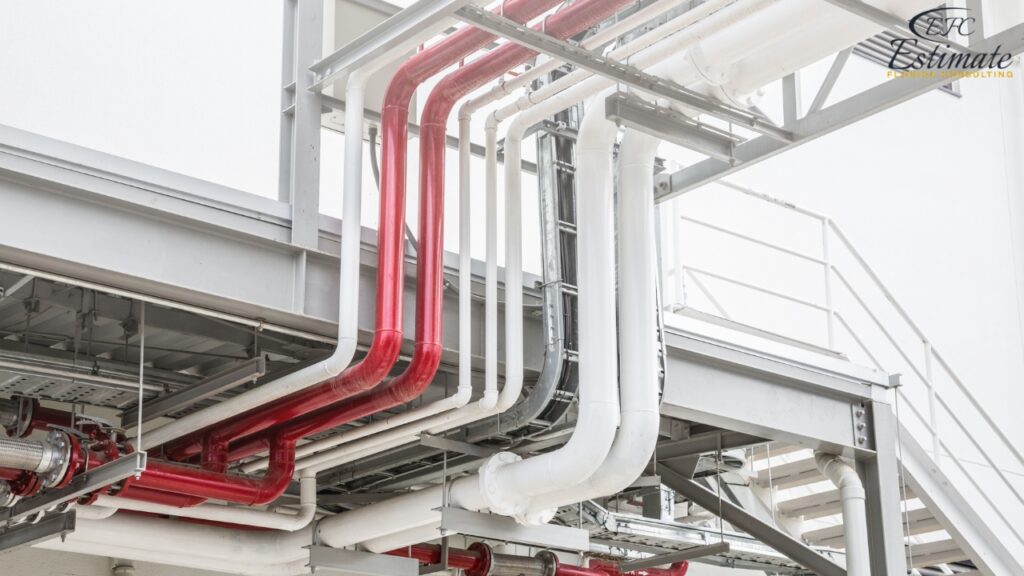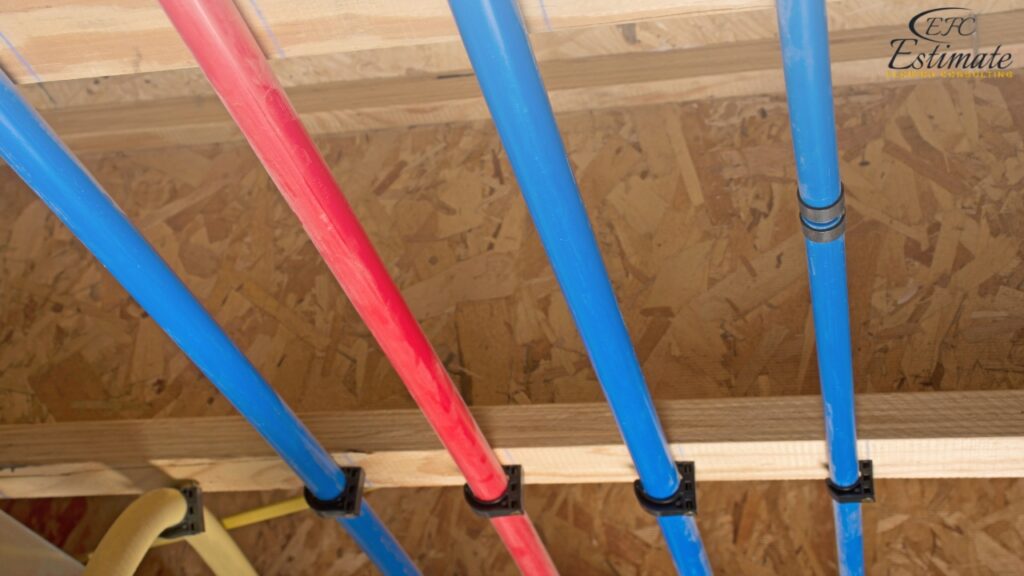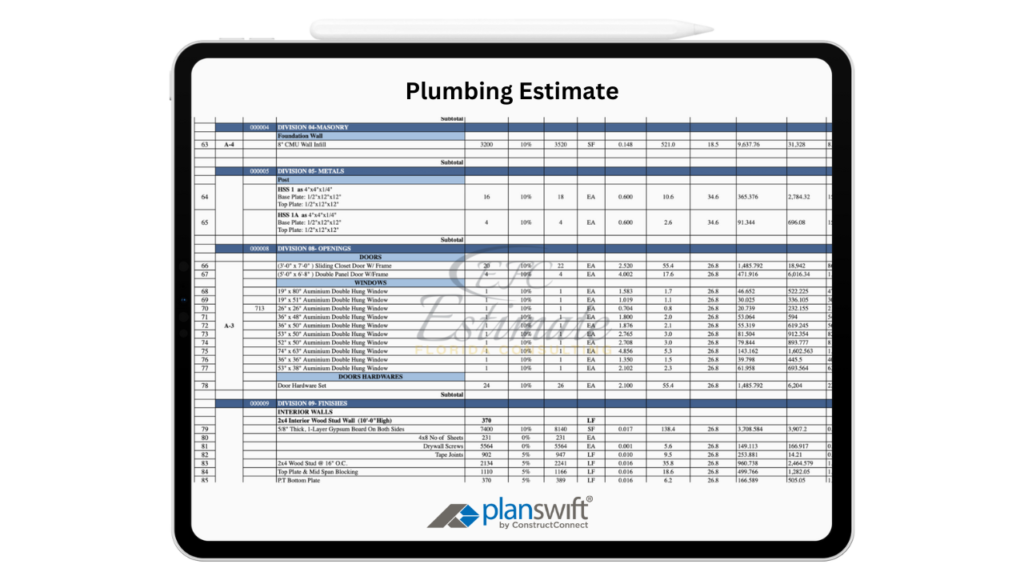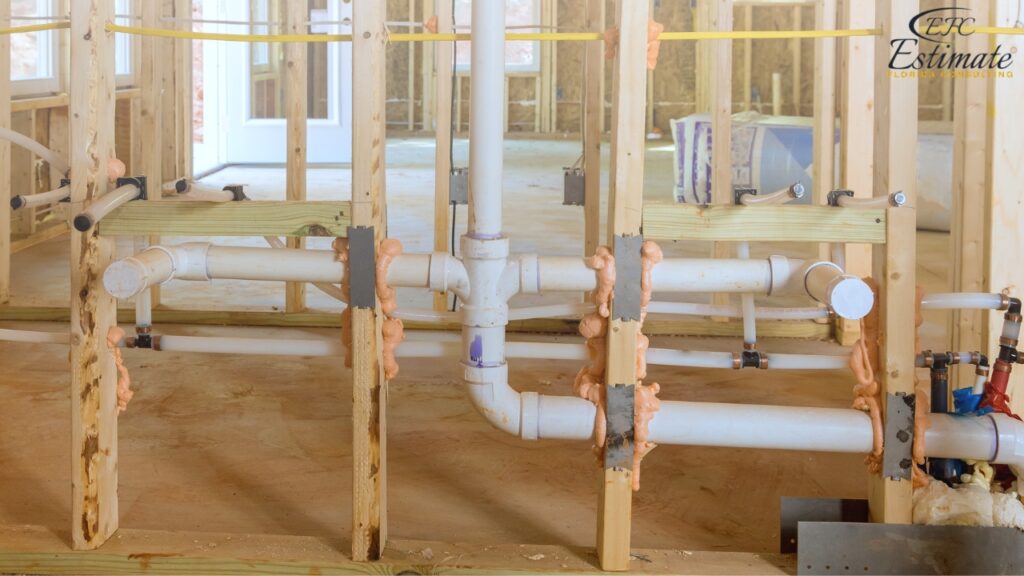How Much to Repipe a House with PEX?
Repiping your house is a significant undertaking that can greatly improve the plumbing system’s efficiency and reliability. Among the various options available, repiping with PEX (cross-linked polyethylene) has gained popularity due to its flexibility, durability, and cost-effectiveness. But how much does it cost to repipe a house with PEX? On average, the cost to repipe a house with PEX ranges from $4,000 to $15,000, depending on the size of the house and the complexity of the job. In this comprehensive guide, we’ll break down the factors that influence the cost and provide you with a detailed estimate.

What is PEX?
PEX, or cross-linked polyethylene, is a type of flexible plastic tubing used in both residential and commercial plumbing systems. Its design features a unique cross-linking process that enhances its durability and flexibility compared to traditional piping materials. PEX is celebrated for its ability to bend and curve around obstacles without the need for numerous fittings and joints. This flexibility not only simplifies installation but also reduces the risk of leaks that can occur at joints in traditional piping systems.
PEX is resistant to various factors that can damage other materials, including scale, chlorine, and high temperatures. This resistance helps maintain the quality of water flowing through the pipes and extends the lifespan of the plumbing system. Additionally, PEX pipes are available in different color-coded varieties (red for hot water, blue for cold water), which simplifies the installation process and helps in the identification of pipes during maintenance.
Compared to traditional copper or PVC pipes, PEX offers significant advantages. It does not require special tools for installation and can be cut and connected using simple crimping tools. This ease of installation can result in considerable savings on both material and labor costs. Moreover, PEX has excellent thermal properties, retaining heat better than some other materials, which can contribute to energy efficiency in your home.
Factors Influencing the Cost of Repiping with PEX
Understanding the factors that influence the cost of repiping with PEX can help you better estimate the total expense and plan your budget effectively. Each factor plays a crucial role in determining the overall cost of the project.
Size of the House
The size of your home is one of the most significant factors affecting the cost of repiping. Larger homes require more materials and labor, which naturally increases the overall cost. For small homes (≤ 1,000 sq ft), repiping with PEX generally costs between $2,600 and $5,200. This estimate includes the basic materials and labor needed for a straightforward installation.
As the size of the home increases, so does the cost. Medium-sized homes (1,000 – 2,000 sq ft) typically range from $5,200 to $10,400, reflecting the additional materials and labor required. For larger homes (≥ 2,000 sq ft), costs can range from $10,400 to $19,500 or more. The increased cost accounts for the additional complexity and scale of the project, including the need for more materials and labor.
The size of the house is a primary factor influencing the cost of repiping. Larger houses require more piping and additional labor, leading to higher costs. The number of bathrooms, kitchens, and other water-using appliances also affects the total cost. For example, a small house with one bathroom and a simple plumbing system will cost significantly less to repipe than a larger house with multiple bathrooms, a kitchen, and a laundry room. The complexity of the plumbing layout, such as the presence of multiple stories or intricate piping configurations, can also impact the cost. Additionally, larger homes may have more complex water delivery systems, requiring more detailed planning and execution.
Cost Breakdown for House Size
House Size | Estimated Cost |
Small (≤ 1,000 sq ft) | $2,600 – $5,200 |
Medium (1,000 – 2,000 sq ft) | $5,200 – $10,400 |
Large (≥ 2,000 sq ft) | $10,400 – $19,500+ |
Number of Fixtures
The number of plumbing fixtures in your home also impacts the cost of repiping. Fixtures include items such as sinks, toilets, showers, and bathtubs. Homes with more fixtures require additional connections and more labor, which can increase the overall cost.
For homes with fewer than 10 fixtures, the cost of repiping with PEX typically ranges from $3,900 to $7,800. This range covers the basic installation costs for a limited number of fixtures. As the number of fixtures increases, so does the cost. Homes with 10 to 20 fixtures generally cost between $7,800 and $13,000. For homes with more than 20 fixtures, costs can range from $13,000 to $19,500 or higher, due to the increased complexity and the additional labor required.

Cost Breakdown for Number of Fixtures
Number of Fixtures | Estimated Cost |
Fewer than 10 | $3,900 – $7,800 |
10 to 20 | $7,800 – $13,000 |
More than 20 | $13,000 – $19,500+ |
Accessibility
The accessibility of your existing plumbing system can significantly affect the cost of repiping. If the plumbing is easily accessible, labor costs will be lower. Conversely, if the plumbing is hidden behind walls or in difficult-to-reach areas, labor costs will increase due to the extra time and effort required to access and replace the pipes.
- Accessible Plumbing: When plumbing is easily accessible, the installation process is more straightforward and less labor-intensive. This results in lower overall labor costs and a more affordable project.
- Difficult Access: If plumbing is located in hard-to-reach areas, such as behind walls or under floors, labor costs will be higher. The need for additional demolition, repair, or relocation of obstacles increases the complexity and cost of the project.
Cost Breakdown for Accessibility
Accessibility | Impact on Cost |
Accessible | Lower labor costs |
Difficult Access | Higher labor costs |
Local Labor Rates
Labor rates can vary widely depending on your location. The cost of labor is influenced by the local cost of living, which affects the overall cost of repiping with PEX.
- Low Cost of Living Areas: In areas with a lower cost of living, labor rates typically range from $59 to $130 per hour. This results in lower overall project costs due to the more affordable labor.
- Moderate Cost of Living Areas: In regions with a moderate cost of living, labor rates range from $130 to $195 per hour. This reflects a balance between material and labor costs.
- High Cost of Living Areas: In high cost of living areas, labor rates can be $195 to $260 or more per hour. The higher labor costs contribute to a more expensive overall project.
Cost Breakdown for Local Labor Rates
Cost of Living Area | Average Labor Cost per Hour |
Low Cost of Living Areas | $59 – $130 |
Moderate Cost of Living Areas | $130 – $195 |
High Cost of Living Areas | $195 – $260+ |
Permits and Inspections
Obtaining permits and undergoing inspections are essential for ensuring that your repiping project complies with local building codes and safety standards. The costs associated with permits and inspections can vary depending on the complexity of the project.
- Basic Permits and Inspections: For straightforward repiping projects, basic permits and inspections generally cost between $65 and $195. These permits ensure that the installation meets minimum safety and quality standards.
- Comprehensive Permits and Inspections: More extensive projects may require comprehensive permits and inspections, costing between $195 and $650. These comprehensive permits often involve more detailed inspections to ensure compliance with all relevant building codes.
90% More Chances to Win Projects With Our Estimate!
- Multi-Family Building
- Hotel Building
- Hospital Building
- Warehouse Building
- School & University Building
- High-Rise Building
- Shopping Complex
- Data Center Building

Cost Breakdown for Permits and Inspections
Permit & Inspection Type | Estimated Cost |
Basic Permit & Inspection | $65 – $195 |
Comprehensive Permit & Inspection | $195 – $650 |
Piping Material Costs
The cost of piping materials is a major factor in the overall expense of repiping. Here’s a comparison of PEX with other common materials:
- PEX: PEX pipes typically cost between $0.52 and $2.60 per linear foot. The affordability of PEX makes it an attractive option for budget-conscious homeowners. Its cost-effectiveness is one of the reasons it is increasingly chosen for repiping projects.
- CPVC: CPVC pipes are priced between $0.65 and $1.30 per linear foot. While slightly more expensive than PEX, CPVC is another viable option for residential plumbing systems. It is often chosen for its resistance to corrosion and its affordability compared to copper.
- Copper: Copper pipes cost between $2.60 and $10.40 per linear foot. Copper is known for its durability and resistance to bacteria, but its higher cost makes it less budget-friendly compared to PEX and CPVC. Copper pipes are often used in applications where longevity and resistance to extreme conditions are required.
Cost Breakdown for Piping Materials
Piping Material | Average Cost per Linear Foot |
PEX | $0.52–$2.60 |
CPVC | $0.65–$1.30 |
Copper | $2.60–$10.40 |
Benefits of Repiping with PEX
Repiping with PEX offers numerous benefits that make it a superior choice for many homeowners. Here’s a detailed look at the advantages of PEX:
- Cost-Effective: PEX is generally more affordable than copper or CPVC piping. Its lower material costs and reduced labor requirements contribute to overall savings on repiping projects. The simplicity of installation and fewer fittings needed for PEX also help keep costs down.
- Durability: PEX is highly resistant to corrosion and scaling, which extends its lifespan compared to traditional materials. This durability reduces the frequency of repairs or replacements, providing long-term value and reliability.
- Flexibility: PEX’s flexibility allows it to bend around obstacles, reducing the need for multiple fittings and connections. This flexibility simplifies the installation process, particularly in retrofitting projects where existing structures might present challenges.
- Improved Water Flow: The smooth interior surface of PEX pipes reduces friction and minimizes clogs, ensuring a steady and efficient flow of water throughout the plumbing system. This contributes to consistent water pressure and improved performance.
- Freeze Resistance: PEX can expand slightly with temperature changes, making it resistant to freezing and bursting in cold climates. This feature is especially beneficial in regions with harsh winters, where traditional metal pipes are more susceptible to freeze damage.
Step-by-Step Guide to Repiping with PEX
A well-planned repiping project ensures a smooth and successful installation. Here’s a detailed step-by-step guide to help you through the process:
Planning and Assessment
Before starting your repiping project, conduct a comprehensive assessment of your home’s existing plumbing system. Identify sections that are prone to leaks, outdated, or otherwise in need of replacement. Mapping out the routes for the new PEX pipes will help in planning the installation process efficiently. Consulting with a professional plumber can provide you with expert advice, a detailed evaluation, and a precise estimate of the project. This step is crucial to address potential issues early on and ensure a smooth installation.

Obtaining Permits
Check with your local building department to determine if permits are required for your repiping project. Securing the necessary permits ensures compliance with local building codes and helps avoid potential fines or complications. The permit process often includes inspections to verify that the installation meets safety and quality standards. Having the proper permits in place is essential for a successful and compliant project.
Shutting Off Water Supply
Before beginning any work, turn off the main water supply to your home. This prevents water flow into the pipes during the installation process. Drain the existing pipes by opening all faucets and fixtures, including sinks, showers, and bathtubs. Properly draining the system helps avoid flooding and ensures a smoother repiping process.
Removing Old Pipes
Carefully remove the old pipes by cutting them into manageable sections. Use appropriate tools, such as pipe cutters or saws, to avoid damaging surrounding structures. Dispose of the old piping in accordance with local regulations and recycling programs. Proper removal and disposal help maintain a clean work area and support environmentally friendly practices.
Installing PEX Pipes
Install the new PEX pipes according to the pre-planned routes. PEX pipes are flexible and can be bent around corners, simplifying the installation process. Use PEX fittings and connectors to attach the tubing to the main water lines and fixtures. Secure the PEX pipes with brackets or straps to prevent movement and minimize noise. Proper securing is important for maintaining the integrity of the installation and avoiding potential damage.
Connecting Fixtures
Connect the new PEX pipes to your plumbing fixtures, ensuring that all connections are tight and leak-free. Use crimp rings or clamps as required to fasten the fittings securely. Check each connection thoroughly to ensure that the fittings are properly seated and that no leaks are present. Proper connections are crucial for the efficiency and longevity of the new plumbing system.
Testing the System
After installing the new PEX pipes, turn the main water supply back on and test the system thoroughly. Check for leaks at all connections and joints, and monitor water flow to ensure proper functioning. Conduct this test under full water pressure to identify any issues that might not be apparent under lower pressure.
Repairing Walls and Floors
Once the new PEX piping system is confirmed to be functioning correctly, repair any walls, floors, or ceilings that were cut or damaged during the installation process. Patch up drywall, repaint surfaces, and replace any damaged flooring. Restoring your home to its original condition ensures that all areas affected by the repiping are properly finished.
Repiping your home with PEX offers a range of benefits, including cost savings, durability, and flexibility. By understanding the costs and following a detailed installation guide, you can ensure a successful repiping project. For personalized estimates or more information, consult with a professional plumber to get expert advice and accurate cost projections.
Download Template For Plumbing Project Breakdown
- Materials list updated to the zip code
- Fast delivery
- Data base of general contractors and sub-contractors
- Local estimators

Conclusion
Repiping your house with PEX can be a highly advantageous investment, offering significant benefits in terms of cost, durability, and ease of installation. With costs ranging from $4,000 to $15,000, depending on various factors such as house size, number of fixtures, and accessibility, it is essential to carefully evaluate these elements to get a precise estimate for your specific needs. PEX’s flexibility, resistance to corrosion, and ease of installation make it an attractive choice over traditional piping materials. By understanding these factors and following a structured approach to repiping, you can enhance your home’s plumbing system effectively and efficiently. For a detailed assessment and personalized estimate, consulting with a professional plumber is recommended to ensure a smooth and successful project.
FAQs
PEX (cross-linked polyethylene) is a flexible plastic tubing used in plumbing systems. It’s popular for repiping due to its flexibility, durability, resistance to corrosion, and ease of installation. Unlike traditional piping materials, PEX can bend around obstacles, reducing the need for fittings and joints.
On average, repiping a house with PEX costs between $4,000 and $15,000. The final cost depends on factors such as the size of the house, the number of fixtures, accessibility of existing plumbing, local labor rates, and the need for permits and inspections.
Key factors include:
- Size of the House: Larger homes require more materials and labor.
- Number of Fixtures: More fixtures mean additional connections and labor.
- Accessibility: Easier access reduces labor costs, while difficult access increases them.
- Local Labor Rates: Vary by location and affect overall costs.
- Permits and Inspections: Costs vary depending on project complexity.
- Piping Material Costs: PEX is generally more affordable than alternatives like copper.
PEX offers several advantages:
- Cost-Effective: Generally cheaper than copper or CPVC.
- Durability: Resists corrosion and scaling, extending the lifespan of your plumbing system.
- Flexibility: Easily bends around obstacles, simplifying installation.
- Improved Water Flow: Smooth interior reduces friction and clogs.
- Freeze Resistance: Expands slightly with temperature changes, reducing the risk of freezing.
Start with a comprehensive assessment of your current plumbing system. Consult with a professional plumber to evaluate needs, plan the new piping layout, and get an accurate estimate. Ensure you obtain necessary permits and prepare for the installation by turning off the water supply and draining existing pipes.
The process includes:
- Planning and Assessment: Evaluate existing plumbing and plan new routes.
- Obtaining Permits: Secure necessary permits and schedule inspections.
- Shutting Off Water Supply: Turn off and drain the water system.
- Removing Old Pipes: Carefully remove and dispose of old piping.
- Installing PEX Pipes: Install the new pipes, securing them properly.
- Connecting Fixtures: Ensure all connections are tight and leak-free.
- Testing the System: Check for leaks and ensure proper water flow.
- Repairing Walls and Floors: Restore any areas damaged during installation.
For a precise estimate tailored to your specific needs, consult with a professional plumber. They can provide a detailed assessment of your home, taking into account all relevant factors, and offer a personalized cost projection.
Yes, additional costs may include:
- Permits and Inspections: Depending on the complexity of the project.
- Repairs: Fixing any damage to walls, floors, or ceilings caused during installation.
- Unexpected Issues: Costs may arise if hidden problems are discovered during the project.
PEX is typically more affordable and flexible than copper and CPVC. While copper is durable and resistant to bacteria, it is more expensive. CPVC is less costly than copper but not as flexible as PEX. PEX’s ease of installation and cost-effectiveness often make it a preferred choice for many homeowners.
Google Reviews



Process To Get Repipe a House with PEX Estimate Report
Here I am going to share some steps to get repipe a house with PEX estimate report.
-
You need to send your plan to us.
You can send us your plan on info@estimatorflorida.com
-
You receive a quote for your project.
Before starting your project, we send you a quote for your service. That quote will have detailed information about your project. Here you will get information about the size, difficulty, complexity and bid date when determining pricing.
-
Get Estimate Report
Our team will takeoff and estimate your project. When we deliver you’ll receive a PDF and an Excel file of your estimate. We can also offer construction lead generation services for the jobs you’d like to pursue further.

